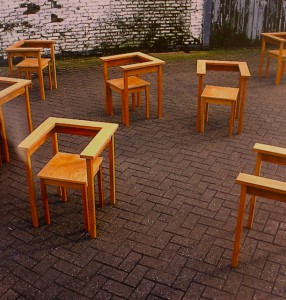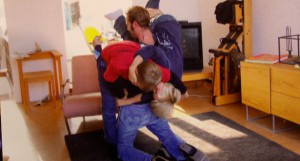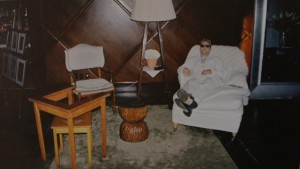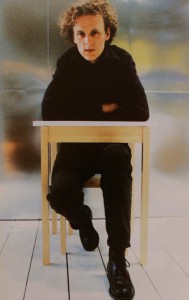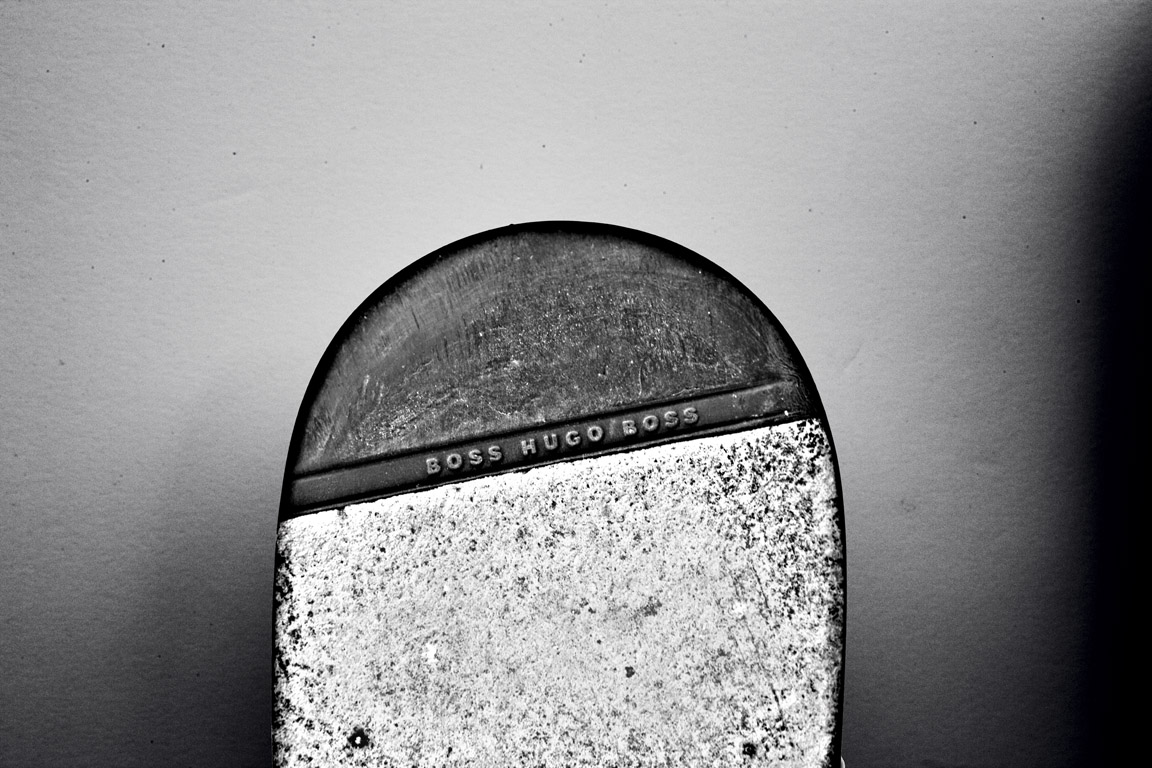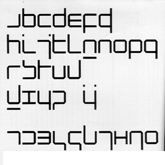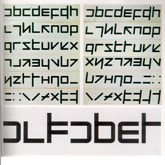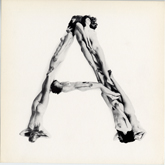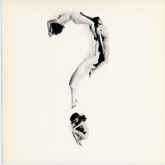Wandering around in the Stedelijk museum my sight was caught by this ‘Tafel-stoel’ (table chair) by Richard Hutten (1990). It is part of the furniture collection. This collection will always have significance because furniture is part of the basics we use in life.
I was initially looking for an interesting chair, but this design didn’t look like a real chair. But then, what is a ‘real’ chair? To answer that question we’ll have to make up a definition of the chair in general. I would say that a chair is a design made for sitting with a backrest (otherwise it would be a stool). In this case there is a backrest present, but it doesn’t really function as such. I could imagine that leaning against it would make it fall. Therefore I would say that this chair is a case on the border of being a chair or a stool. Meanwhile it is also a table. Or actually it was. It looks like the former tabletop was cut out to become the sitting of the chair. Pondering about the traits of the chair I figured that this design item still has relevance for us in life and work nowadays. The question about the definition of the chair will always remain present and this chair is an example of it. Sometimes we can’t categorize items and that’s what makes these objects interesting to look at. They make us wonder and evaluate our attitudes towards the things we use in our daily life. And as Wittgenstein noted in his ‘Tractatus’ ; “we have to know about the connections between the objects we use to understand the world“.
They are always placed in a certain context. A table is not just a bare object, there are chairs around it, it is situated in a room, etc. With this philosophy in mind we might understand a little better why this chair is not easily understood. The connections are not clear.
The relevance of this chair will become more clear when we look at the reason why the Stedelijk came up with this collection to exhibit. The collection is considered on the basis of five themes, addressing aspects such as furniture in the collection which enjoys the status of international design icon and evolutions in particular kinds of furniture design (The furniture collection Stedelijk Museum Amsterdam – Dosi Delfini, L. A. [x]). The ‘Table Chair’ is an example of a conceptual design. Conceptual designs can’t be missed in an overview of furniture from (roughly) the last century, since that become a big focus in the world of art. Art can’t get more abstract than a white canvas. But ideas can go as far as you can imagine and beyond. And that’s where the conceptual art comes in. It’s about ideas, not about beauty and functionality alone. In Hutten’s work we can see the extreme clarity of form, which still leaves an unexpected amount of freedom in interpretation. “The austerity of his designs is the rare kind that makes you feel cheerful” (Richard Hutten – Ed van Hinte). As with the Table chair: it can be used in various ways, even in a way the designer could never have foreseen.
You could place the back- and armrest in another way then you would regularly expect. For example the other way around, so it becomes more like a table to lean on.
It is exactly what would give joy to Hutten and to me. I also like conceptual art a lot. But it can be a trap in which objects become too direct. Hutten knew about this pitfall and made sure that there was always enough space left for imagination in his designs. He said: ‘Traditionally design is about solving a problem. I don’t solve problems; I create possibilities’ (Richard Hutten: works in use – Brigitte Fitoussi). I share this opinion with him, because problem solving is one thing. Creating new things is something different. It is like grabbing something out of the air (which is quite hard). And it is like making a chair out of a table, which becomes a creature, challenging your common sense.

